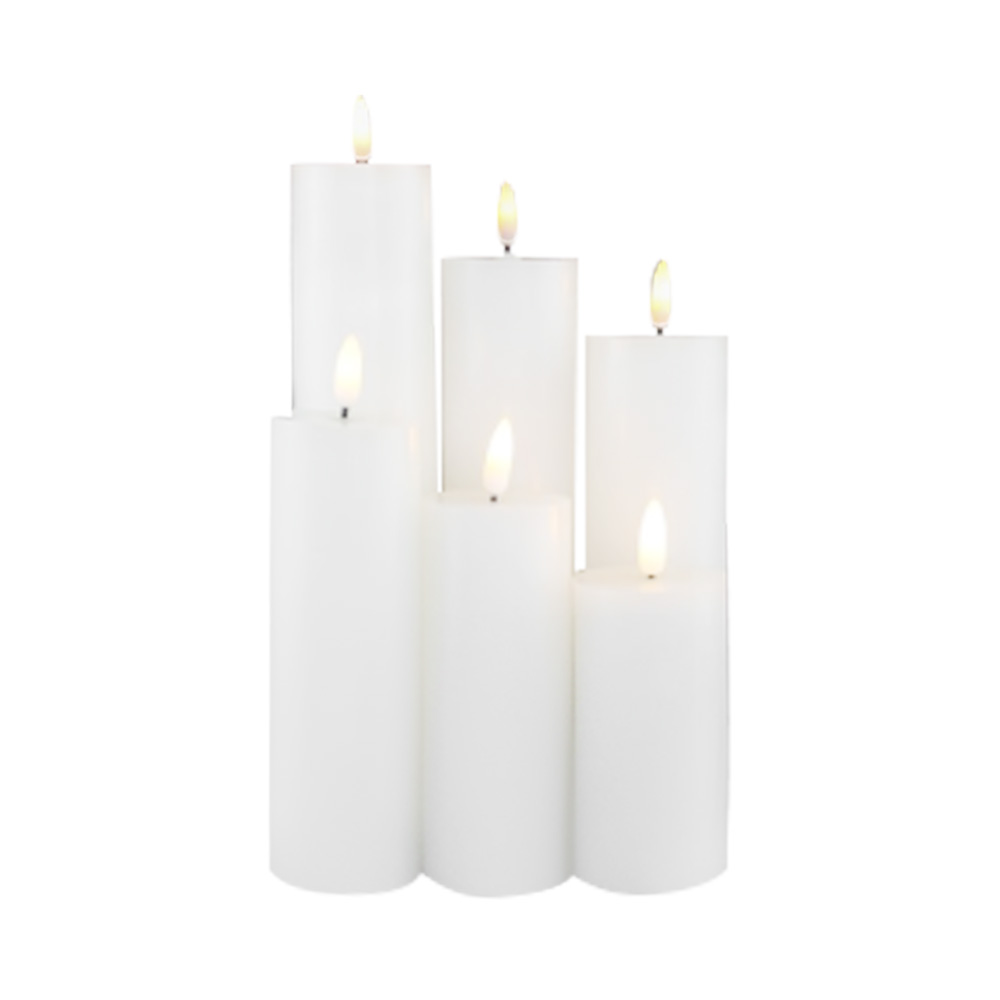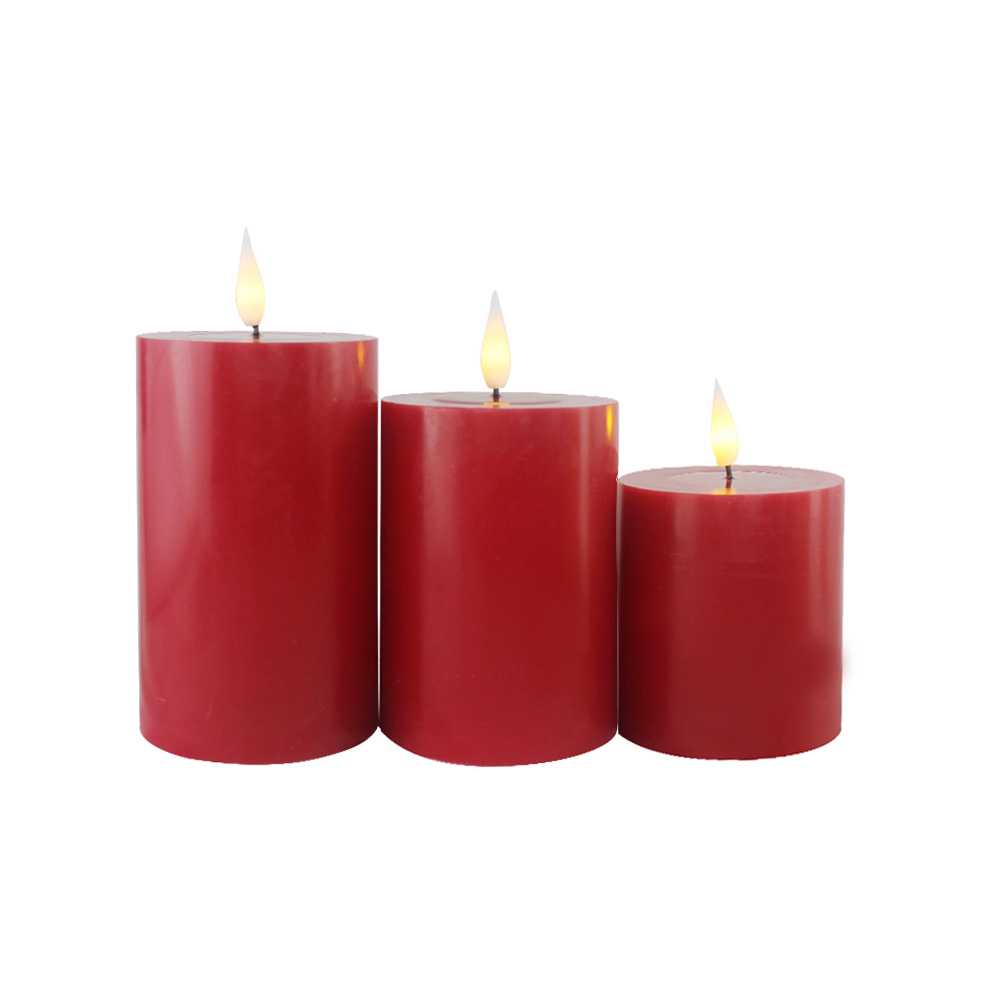How does an LED electronic candle simulate the look and effect of a traditional candle?
How Does an LED Electronic Candle Simulate the Look and Effect of a Traditional Candle?
Candles have long been used for both practical and decorative purposes. Their soft, flickering light creates a warm and inviting atmosphere, making them ideal for everything from romantic dinners to relaxing baths or festive celebrations. However, traditional candles also come with certain risks, such as the potential for fire hazards and the need for constant monitoring. As a result, LED electronic candles have gained popularity in recent years as a safer, more convenient alternative. These modern creations are designed to closely replicate the look and effect of a traditional candle, offering the same visual ambiance without the associated risks. This article will explore how LED electronic candles simulate the aesthetic and functional characteristics of traditional candles, including their design, lighting effects, and the technologies that make them effective substitutes.
Understanding LED Electronic Candles
LED electronic candles are battery-powered lighting devices designed to resemble traditional candles in both appearance and function. Unlike traditional wax candles, which rely on a wick and flame to produce light, LED candles use light-emitting diodes (LEDs) as the primary source of illumination. These LEDs are housed in a plastic or wax-like exterior that mimics the look of real candle wax, often including features such as a flickering effect and a warm, soft light that closely resembles the glow of a burning flame.
The design of LED candles is versatile, with many models offering customizable features such as adjustable brightness, timers, and remote control operation. Some LED candles even come with scented inserts or colored lighting options, adding to the sensory experience and enhancing their resemblance to traditional candles. These electronic candles are widely used in homes, businesses, and events, providing an aesthetically pleasing and safe alternative to conventional candles.
Simulating the Flickering Flame Effect
One of the most distinctive features of a traditional candle is its flickering flame, which creates a dynamic and calming atmosphere. Reproducing this flickering effect is essential for an LED electronic candle to convincingly mimic the appearance of a real candle. To achieve this, manufacturers use a variety of techniques to simulate the unpredictable motion of a candle's flame.
Most LED candles employ a combination of LED technology and small motors or electronic circuits that manipulate the intensity and movement of the light. For instance, certain models use a microprocessor that controls the brightness of the LED in a way that mimics the natural fluctuations of a flame. The light gradually dims and brightens in a random pattern, giving the illusion of a flickering effect. Additionally, some models use a small, rotating piece of translucent plastic or a reflective surface inside the candle to scatter the light and create a movement that closely resembles the dancing flame of a traditional candle.
In some cases, more advanced LED electronic candles incorporate a multi-LED design, where multiple LEDs are placed in different locations within the candle's housing. These LEDs can be programmed to light up in a sequence, creating a more realistic and dynamic flickering effect. The use of dimmable LEDs also allows for fine-tuning of the brightness and flicker speed, enhancing the realism of the simulated flame.
Color Temperature and Warmth of Light
The color of the light emitted by traditional candles is typically warm, ranging from yellow to orange, with a subtle red hue. This warm glow is associated with the relaxing and comforting qualities of candlelight. To simulate this aspect of a traditional candle, LED electronic candles are designed to emit light that closely matches the color temperature of a real flame.
LED lights have a color temperature measured in Kelvins (K). Traditional candles tend to have a color temperature between 1,500K and 2,000K, which is much warmer than the cool white light emitted by typical LED bulbs used for general lighting. To replicate this warmth, LED candles are designed with a specialized LED that produces a soft, amber or yellowish light. The LEDs used in electronic candles often have a color temperature that closely matches the warm, inviting glow of a real candle. This helps to create a similar ambiance, allowing the LED candle to mimic the feeling of a traditional candlelight experience.
Additionally, some LED candles are designed with a gradient light pattern that gradually shifts from yellow to orange, further enhancing the sense of warmth and realism. This color shifting can also be adjusted, allowing users to customize the brightness and warmth of the light to suit their preferences or the surrounding environment.
Materials and Design for Realistic Appearance
In addition to the lighting effects, the materials used to construct LED electronic candles play a crucial role in simulating the look of a traditional candle. Many LED candles are made with a wax-like exterior, often featuring the same textures and shapes as real candles. Some models use paraffin wax or a similar material that feels and looks very similar to traditional candles. This gives the electronic candles a more authentic appearance and helps them blend seamlessly into environments where real candles would typically be used.
Other LED candles are constructed with plastic exteriors designed to mimic the appearance of wax. These candles often feature a textured surface that looks like the slightly uneven, smooth finish of a real wax candle. Some designs even include details such as "dripped wax" at the top, which adds to the realism. These design features, combined with the warm glow of the LED light, make the electronic candle look like a traditional wax candle, even from a close distance.
LED candles also come in a variety of shapes and sizes, ranging from classic pillar candles to tea lights and even larger, more decorative designs. This variety allows them to be used in many different settings, from intimate home decor to large event decorations, making them highly versatile for simulating the aesthetic of traditional candles in various contexts.
Safety Features and Practical Benefits
One of the primary reasons for choosing LED electronic candles over traditional candles is the safety they offer. Traditional candles, while creating a beautiful ambiance, also present certain risks. The open flame can cause accidental fires, especially in areas where there is a risk of the candle being knocked over or exposed to flammable materials. In contrast, LED candles provide the same visual effect without the open flame, reducing the risk of fire hazards. As a result, they are considered a safer option for homes with children, pets, or areas where open flames are prohibited, such as offices, hospitals, or hotels.
Another advantage of LED candles is their longer operational lifespan. Traditional candles burn down over time and need to be replaced regularly, whereas LED electronic candles can be used for thousands of hours before the LED light needs to be replaced. This makes LED candles a more cost-effective option in the long run, as they do not require constant replenishment. Additionally, LED candles are typically powered by batteries or can be charged via USB, eliminating the need for constant monitoring of a flame or the use of matches and lighters.
Many LED electronic candles also come with additional features that enhance their convenience and usability. Some models are equipped with timers, allowing the candle to turn off automatically after a set period of time. Others include remote controls, which allow users to adjust the brightness or turn the candle on or off without needing to physically interact with the device. These features make LED candles highly user-friendly and adaptable to various environments, whether in the home, at events, or in commercial settings.
Environmental Impact of LED Candles
From an environmental perspective, LED candles offer several benefits over traditional candles. One of the primary advantages is that LED candles do not produce smoke, soot, or toxic fumes, which are byproducts of burning wax or paraffin in traditional candles. These emissions can contribute to indoor air pollution, and over time, the residue can accumulate on walls, furniture, and ceilings. LED candles, on the other hand, emit clean light and do not release harmful particles into the air.
Additionally, LED candles are more energy-efficient than traditional candles. LED lights consume far less power than the flame of a traditional candle, and they do not require any ongoing fuel consumption, such as wax. This can result in lower energy consumption and a reduced environmental footprint over time, making LED candles a more sustainable choice for those looking to minimize their ecological impact.

Ningbo Weizhi Electronics Co., Ltd.
- We will be pleased to provide products with high quality, reasonable price, punctual delivery and best service for you!
GET A QUOTE
No.16, Zhuangqiao Loujia Xinqiao 3rd Road, Jiangbei District, Ningbo china
-
 +86-18067520996
+86-18067520996
-
 +86-574-86561907
+86-574-86561907
-
 +86-574-86561907
+86-574-86561907
-
 [email protected]
[email protected]
Copyright 2024 Ningbo Weizhi Electronics Co., Ltd. All Rights Reserved.




 English
English Deutsch
Deutsch







